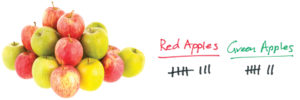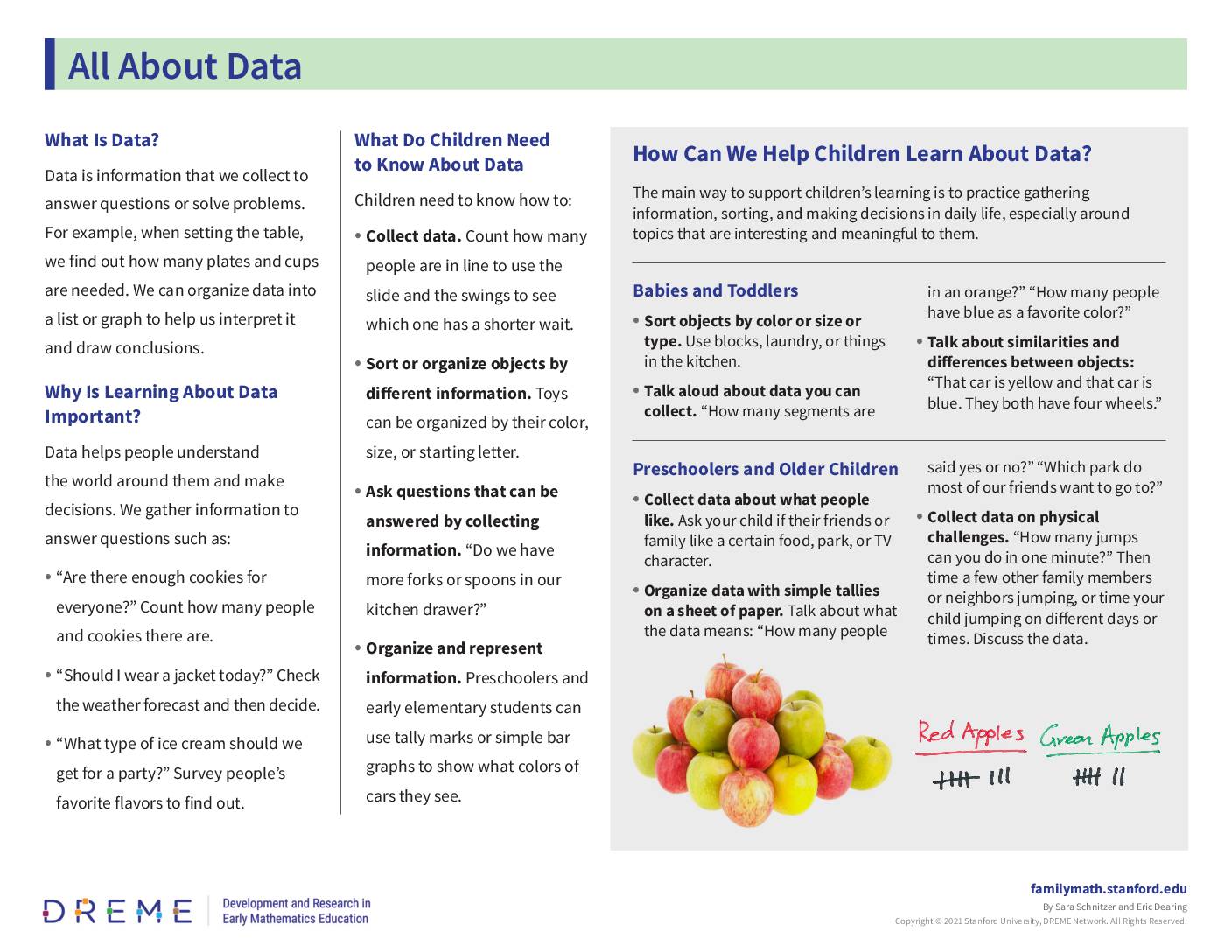 What Is Data?
What Is Data?
Data is information that we collect to answer questions or solve problems. For example, when setting the table, we find out how many plates and cups are needed. We can organize data into a list or graph to help us interpret it and draw conclusions.
Why Is Learning About Data Important?
Data helps people understand the world around them and make decisions. We gather information to answer questions such as:
- “Are there enough cookies for everyone?” Count how many people and cookies there are.
- “Should I wear a jacket today?” Check the weather forecast and then decide.
- “What type of ice cream should we get for a party?” Survey people’s favorite flavors to find out.
What Do Children Need to Know About Data?
Children need to know how to:
- Collect data. Count how many people are in line to use the slide and the swings to see which one has a shorter wait.
- Sort or organize objects by different information. Toys can be organized by their color, size, or starting letter.
- Ask questions that can be answered by collecting information. “Do we have more forks or spoons in our kitchen drawer?”
- Organize and represent information. Preschoolers and early elementary students can use tally marks or simple bar graphs to show what colors of cars they see.
